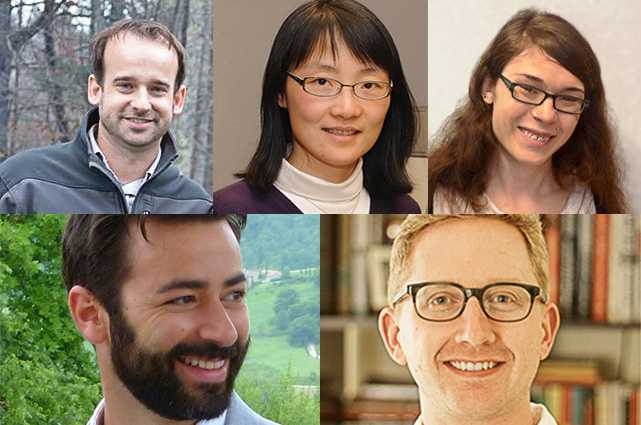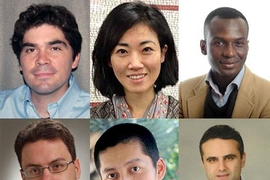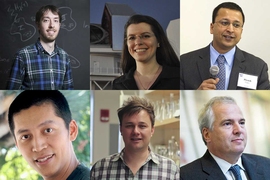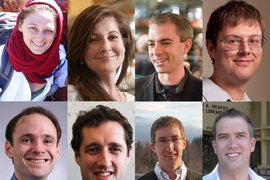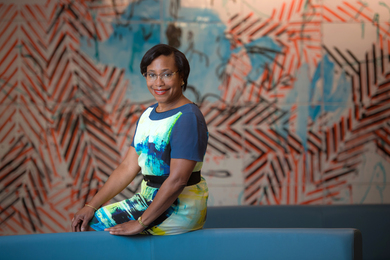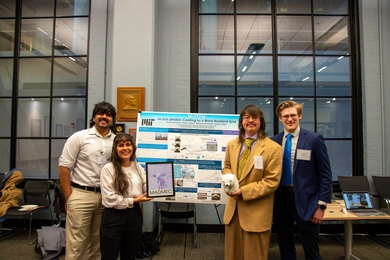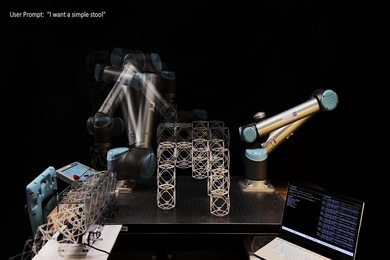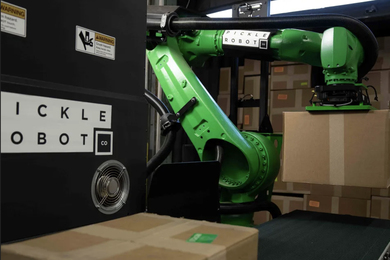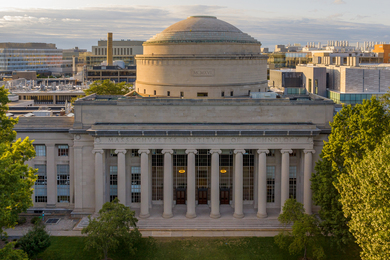Five new professors have joined the School of Science this fall in the departments of Chemistry, Mathematics, and Earth, Atmospheric and Planetary Sciences. Their research interests span a range of topics, including the genetics of ancient microbes, the chemistry of cell membrane proteins and intercellular interactions, the development of new methods of controlling catalyzed reactions, and symplectic and contact geometry.
Gregory Fournier
Fournier joins the Department of Earth, Atmospheric and Planetary Sciences as an assistant professor of geobiology. His research integrates phylogenetics and horizontal gene transfer (HGT) with studies of microbial evolution, geochemistry, and planetary history. Specific areas of his research include: HGT- and genome-based calibration of molecular clock models of microbial evolution; ancestral reconstruction of ancient proteins and metabolisms; the biogeochemical impact of HGT and microbial metabolism evolution; the role of partial HGT in the complex ancestry of organismal lineages; and using HGT events to identify novel antibiotic drug targets for protozoan diseases. Fournier received his PhD in genetics and genomics from the University of Connecticut and his bachelor's in genetics, cell and developmental biology from Dartmouth College.
Mei Hong
Hong joins the Department of Chemistry as a professor this fall. Her research seeks to elucidate the structure, dynamics, and mechanism of membrane proteins and other biological macromolecules using advanced multidimensional solid-state NMR spectroscopy. Phospholipid membranes and proteins embedded in them are universal components of cells and play key roles in many cellular functions. Hong is particularly interested in how the structure and dynamics of membrane peptides and proteins underlie their abilities to conduct ions across the lipid bilayer, catalyze fusion of virus envelopes and cell membranes, and disrupt microbial cell membranes during immune defense. She also studies the structure of the polysaccharide-rich plant cell walls in order to understand how cellulose and matrix polysaccharides form the 3-D architecture that both provides mechanical strength to plant cells and allows plant cells to grow. Hong received her bachelor's in 1992 from Mount Holyoke College and her PhD in 1996 from the University of California at Berkeley. After a National Institutes of Health postdoc fellowship at MIT, she became a professor at the University of Massachusetts at Amherst in 1997 and then at Iowa State University in 1999. She is a fellow of the American Association for the Advancement of Science and has won numerous awards and honors, such as the 2003 Pure Chemistry Award from the American Chemical Society and the 2010 Founders Medal from the International Council on Magnetic Resonance in Biological Systems.
Emmy Murphy
Murphy, an assistant professor of mathematics, first came to MIT as a CLE Moore Instructor of Mathematics in 2012. She works in symplectic and contact geometry, specifically in higher dimensions. Her work primarily focuses on construction and classification of geometric objects through symplectic flexibility. After earning her bachelor's in mathematics in 2007 at the University of Nevada at Reno, she completed her PhD in 2012 under Yakov Eliashberg at Stanford University. Her thesis defined a class of Legendrian submanifolds for which the h-principle holds. This has applications to a partial classification of Stein manifolds up to deformation. Since coming to MIT, there have been two major developments in the field by Murphy and her co-authors. The first of these gives constructions of irregular Lagrangian submanifolds, including closed Lagrangians which have no interpretation in mirror symmetry, and demonstrating that exact Lagrangian immersions do not conform to the philosophy of the Arnol'd conjecture. The second development shows that every smooth manifold admits a contact structure, except for those which obviously cannot for homological reasons. It also gives a partial classification of contact structures by extending the notion of overtwistedness to high dimensions. These address long-standing problems in contact, symplectic, and complex geometry, contributing to a fundamental perspective shift in the understanding of high dimensional contact and symplectic manifolds.
Alex Shalek
Shalek joins the Department of Chemistry as an assistant professor with joint appointments to the Institute for Medical Engineering and Science (IMES) at MIT and the Ragon Institute of MGH, MIT, and Harvard. His research is directed towards the development and application of new technologies that facilitate understanding of how cells collectively perform systems-level functions in healthy and diseased states. With respect to technology development, the Shalek lab leverages recent advances in nanotechnology and chemical biology to establish a host of core, cross-disciplinary platforms that collectively enable them to extensively profile and precisely control cells and their interactions within the context of complex systems. With respect to biological applications, the group focuses on how cellular heterogeneity and cell-to-cell communication drive ensemble-level decision-making in the immune system, with an emphasis on “two-body” interaction (such as host cell-virus interactions, innate immune control of adaptive immunity, tumor infiltration by immune cells). His goal is to not only provide broadly applicable experimental tools, but also help transform the way in which we think about single cells, cell-cell interactions, diseased cellular states, and therapeutics, to create a new paradigm for understanding and designing systems-level cellular behaviors in multicellular organisms. After Shalek received his bachelor's in chemical physics from Columbia University in 2004, he completed his PhD at Harvard University in 2011, where he remained as a postdoc fellow.
Jeffrey Van Humbeck
Van Humbeck joins the Department of Chemistry as an assistant professor. His laboratory will develop new methods for controlling catalytic reactions, and the structure of organic materials. By incorporating catalysts within restrictive supramolecular volumes, size-selective oligomerization will be pursued in the context of energy applications (such as biofuels upgrading) and medicinal chemistry (such as polyketide synthesis). Further investigations in the area of catalysis will probe the effect of including ionically charged elements in traditional catalyst structures, with aims of improving both efficiency and selectivity in new reactions. Ion pairing — as a means of structural control — has been explored to a much greater extent in polymers, where the typical units of charge result from proton transfer. As an alternative, the inclusion of inherently charged units that lack protons will be pursued, for both functional and structural organic materials. Additionally, the development of charge by electron transfer between redox active centers will be investigated as an avenue to produce responsive materials. Van Humbeck comes to MIT from a postdoc fellowship at University of California at Berkeley. He completed his bachelor's at the University of Calgary in 2005 and his PhD at Princeton University in 2011.
